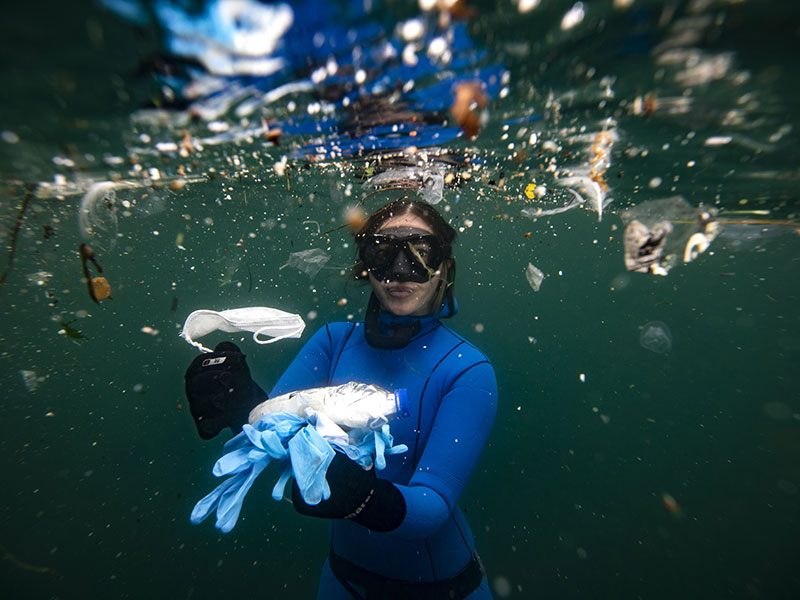The old home of rare earth metals
Geiger counters crack in Ytterby where rare metals were first found, some way from an industry vital to “greens” handed to China
Geiger counters crack in Ytterby where rare metals were first found, some way from an industry vital to “greens” handed to China
Fearing shortages, many nations want to ease China’s grip on production but will have to manage risks such as radioactive thorium, high energy use and a toxic cocktail of hydrochloric acid and sodium chloride used to isolate the metals.
Experts say rare earths show how the world fails to include pollution – borne by China which produces 97 percent of world’s supplies – into costs of laptops, TVs or “green” goods such as wind turbines or electric car batteries that use the metals.
“It isn’t factored in and you can make a case that almost everything is under-priced,” said Thomas Graedel, professor of industrial ecology at Yale University who was an author of a UN Environment Programme report on speciality metals recycling.
“As a planet we are using the entire periodic table of the elements and to varying degrees this requires that we spend a lot of energy,” he said. “It’s a bit of a Faustian bargain.”
Cancer
The disused Ytterby mine, on an idyllic island in the Baltic Sea near Stockholm, lent bits of its name to rare earths discovered there in the late eighteenth century such as ytterbium, yttrium, terbium and erbium.
“My chemistry teacher used to walk around the neighbourhood with a Geiger counter and it would crackle like crazy when he got close to the houses,” said Rolf Hultberg, who has lived close by the mine most of his life.
He laughed off the slight rise in radiation at his home, built with rock from the mine by the village of 2,900 people. Levels are below those considered a health threat. But experts say slightly radioactive thorium, often found in ores that also contain rare earths, are a huge environmental hurdle. When rocks are smashed in mining, thorium dust can lodge in lungs and cause cancer.
“The most critical potential environmental impact of rare earth metals is the presence of radioactive elements in most of the ores, especially thorium,” said Christian Hagelueken, of Umicore, a Belgian-based firm looking
at new products from specialty metals.
Studies including those in the Chinese Medical Journal have shown high rates of lung cancer among rare earth miners, traced to thorium. “We are looking for any rare earth deposit anywhere in the world without uranium or thorium. But we haven’t found any,” said Harald Elsner, a rare earths expert at the German geological service BGR. He also said costs of handling, storage and disposal of the slightly radioactive waste were “definitely” the main environmental problems for miners in places from Australia to Alaska considering new production.
Ray Sollychin, a thorium expert at the International Atomic Energy Agency in Vienna, said radiation levels from China’s biggest mine were “high enough to be a concern but it’s low enough be piled in the mountains”.
The waste is “in a dust form but still not very well contained”. He said he had urged Chinese officials “to spend money to turn it into an oxide with a simple chemical process so they can store it in a solid form rather than as dust.” That would decrease the risks of inhalation.
Cauldrons of acid
China has raised worries about supplies by curbing exports, notably to Japan but also to the United States and Europe, renewing interest in finding sources in other countries.
All are likely to face tougher environmental laws than China. Workers at Baotou, which calls itself the “capital of rare earths” 650km (400 miles) west of Beijing, tend cauldrons of sputtering acid and ore amid acrid fumes.
“There is no question that the costs of environmental compliance in the US are significantly higher than in China,” said Jim Sims, spokesman of Molycorp Minerals LLC, the main US producer from stockpiled
ore at Mountain Pass, California.
“That has provided the Chinese with a significant price advantage in rare earths. But that has changed,” he said. He predicted that Molycorp, planning to resume production with a new, cleaner process in 2012, could mine at a cost of $1.26 per pound (0.45 kg) averaged across all earths, against $2.54 as the firm’s best estimate for Chinese production.
“Some ores have a lot of thorium. We are blessed with a very low level… We have a protocol for handling it and it’s then shipped to a storage facility,” he said.
“The Russians and the Indians have a relatively higher percentage of thorium,” he said. Mining was halted at Mountain Pass in 2002 partly after a wastewater leak from a pipeline.
Nobel connection
The Ytterby mine, reached by a steep path through a wood, won fame after a 1794 paper by Johan Gadolin – “Study of a black heavy kind of stone from the Ytterby quarry”. The stone contained the rare earth element gadolinium.The mine shaft is blocked by a slab of concrete. Village streets are named after rare earths and Nobel prize winners often visit around the time they collect awards in Stockholm on December 10th.
Sweden is exploring two sites for possible rare earths – Norra Karr and Olserum in southern Sweden’s forests, as part of the European Union’s strategy to secure and improve supplies.
Thorium has fallen out of favour as a possible nuclear fuel, meaning no real demand from miners. Some disused mines that worked decades ago to extract thorium or uranium were now being re-branded as rare earth deposits.
Thorium has some advantages over uranium for power generation, with India most interested. But it is less stable than uranium as an ingredient for nuclear bombs.
Far from the Chinese approach, anyone wanting even to build in Ytterby has to follow special designs such as ventilation to deal with the high background radiation.
“We allow new buildings, with precautions,” said Susanne Iden, the local official in charge of granting building permits.













